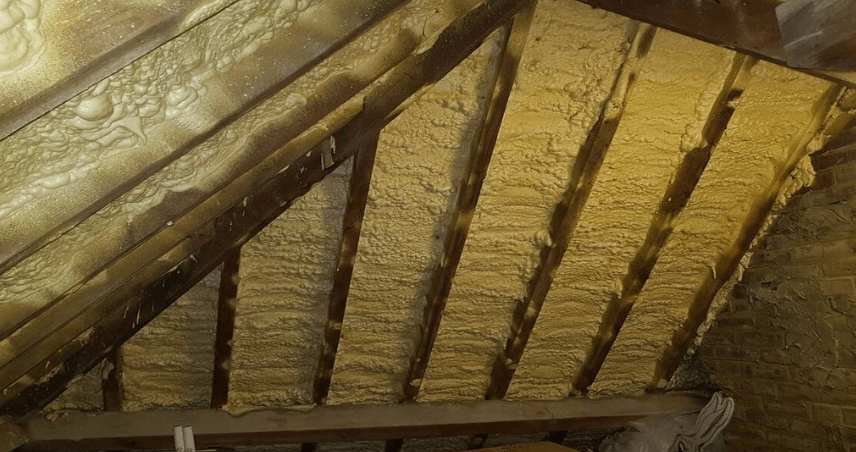Work life balance for the modern father.
As the world of work becomes increasingly stressful and demanding so it becomes ever more difficult to find “me-time”. Peter Mardon Father and Commercial Director of WSP Solicitors shares his...
News and Blog
Spray foam insulation is an alternative to traditional building insulation. People have been using this type of insulation for over 30 years. It involves spraying a liquid foam into position, which then sets to form an insulating layer.
Open cell: it remains soft after setting and is not as prone to condensation issues.
Closed cell: it is rigid once set and so does not allow for circulation of air. Closed cell is more difficult to remove than open cell. You may be forced to replace your entire roof if you want to remove this type of insulation.
Spray foam insulation is applicable in most areas of your home but is primarily utilized in loft spaces. Often between the rafters of a timber roof, where it can be more difficult to fit traditional-style insulation. Spray foam has gained popularity because of its ease of application.
If the spray foam has been properly installed by a professional, you should have paperwork, which should include:
Spray foam insulation reduces air circulation and ventilation within a roof space. Dampness and condensation can form due to the lack of ventilation. The dampness can then, over time, put framed roofs at risk of decay. A decaying roof can cause structural issues which not only have obvious safety issues but will likely reduce the value of your property.
Due to the potential for wood rot and devaluation of the property, there are many mortgage lenders who are reluctant to lend on properties which contain spray foam.
Some lenders may lender where there is open cell spray foam because the risks of severe condensation are lower.
You will not be able to obtain an equity release mortgage if your home contains spray foam insulation.
If you plan to sell or mortgage your home, consult with an expert to determine the type of insulation you possess. Understand the potential implications of insulation removal.
Depending on the type of spray foam insulation you have, it may be possible to remove it without damaging the roof itself. However, it could be that the entire roof needs to be replaced, which would of course come at a significant cost.
If you discover you have spray foam insulation because a potential buyer of your property has instructed a surveyor and the surveyor has reported the issue to your buyer, the buyer may wish to obtain quotations for works to remove the insulation and replace it with a safer product. You could then agree with the buyer a reduction in the purchase price to cover or share the cost of the works.
It is important to note that if the spray foam insulation has been properly installed and considers and mitigates risks of condensation there may never be an issue with the property.
However, some lenders will refuse to lend where the existence of spray foam insulation is reported to them. Some lenders will lend, but they might demand further investigation of the insulation. The cost of such further investigations will likely fall to the person requiring the mortgage.
If you find yourself affected by spray foam insulation in your home, the best course of action is to promptly relay any concerns you may have to your surveyor. Don’t hesitate to reach out and seek the solutions you deserve.
If you’re looking for support with residential conveyancing matters and would like legal advice, please contact your local WSP Solicitors office in Gloucester or Stroud.
If you have a quick question or would like to request a callback, use our simple online enquiry form.

Contact our office
Get in touch